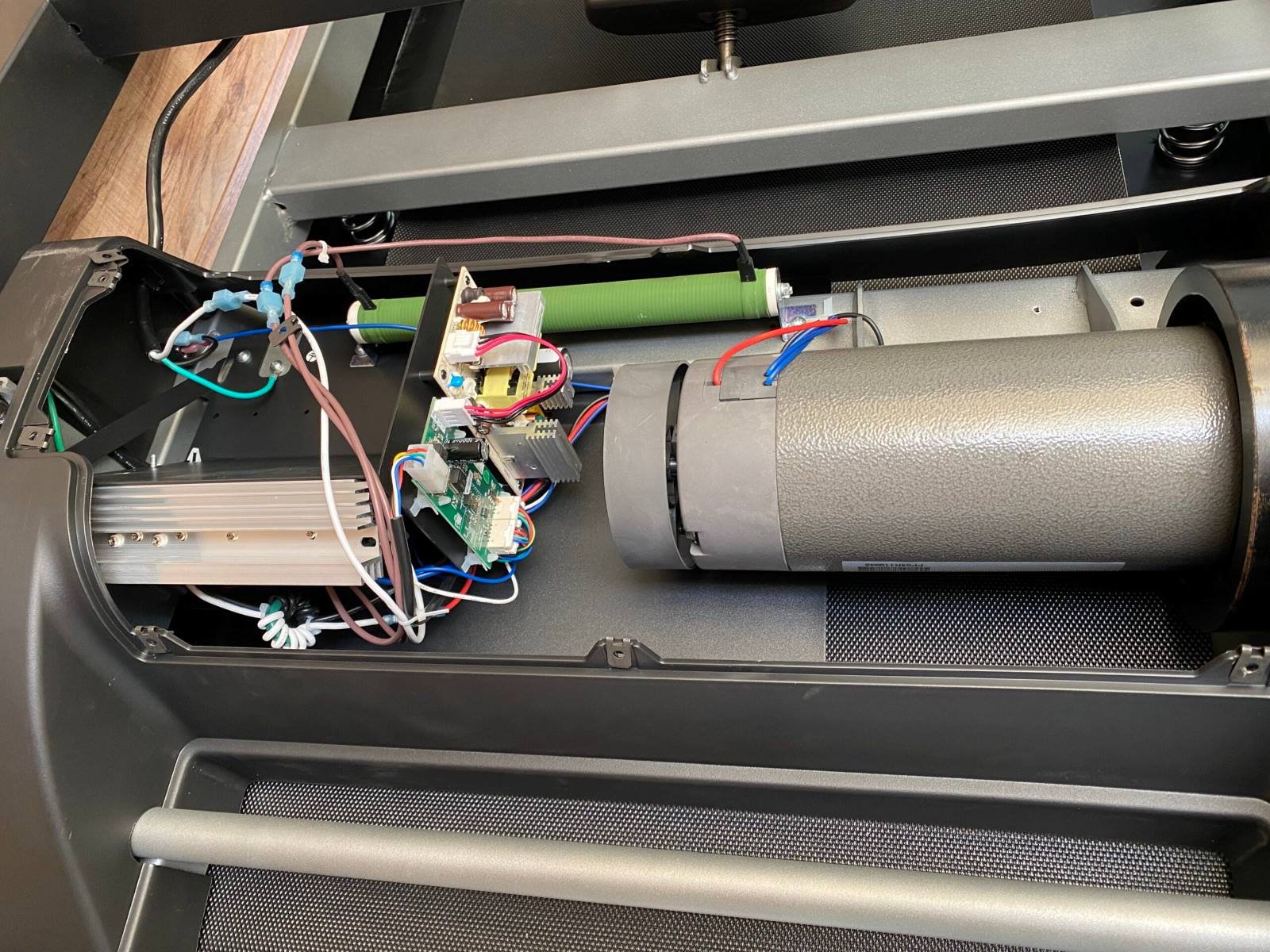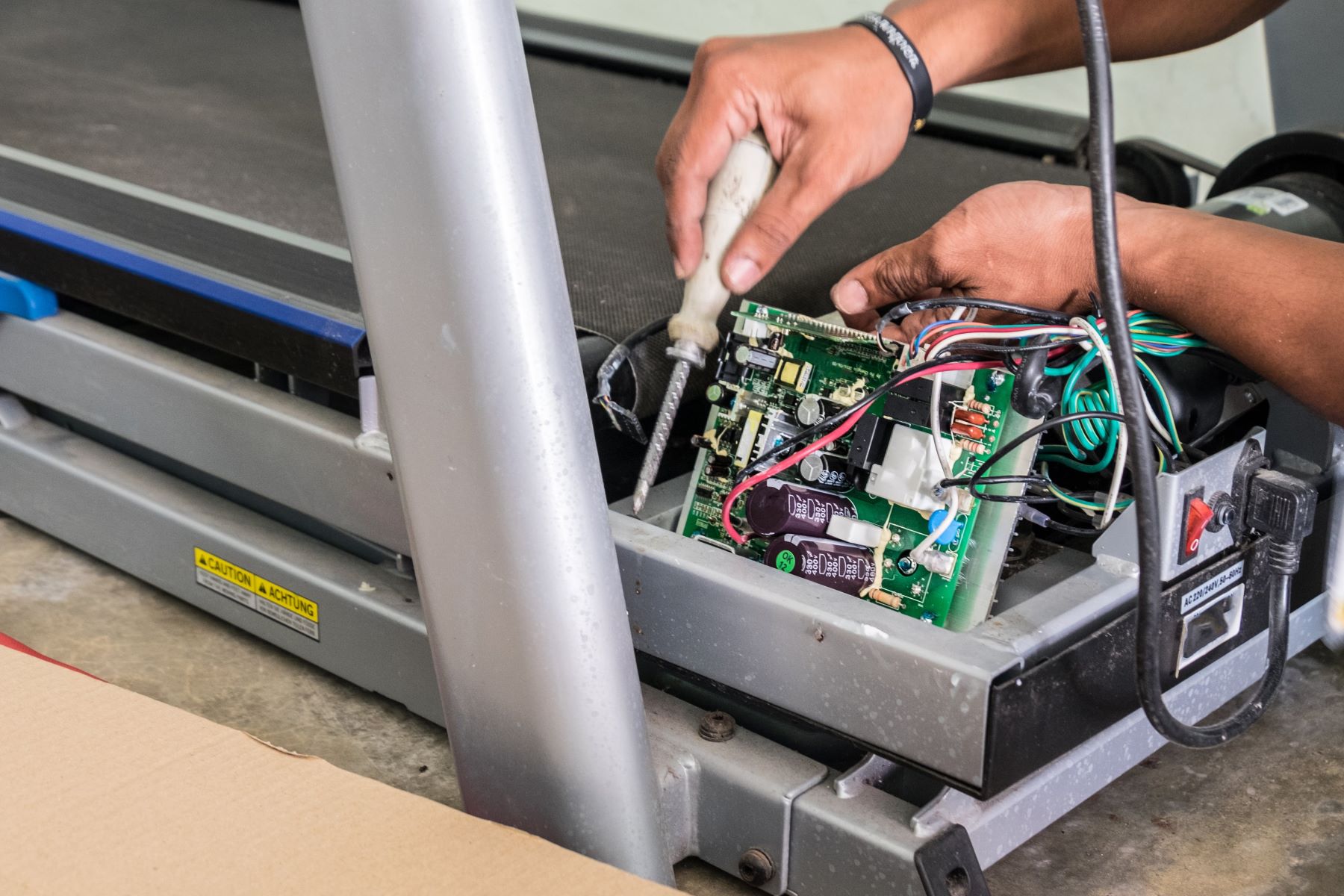Home>Misc>Featured>Which Of The Following Best Describes The Hedonic Treadmill?


Featured
Which Of The Following Best Describes The Hedonic Treadmill?
Modified: January 2, 2024
Discover the concept of the hedonic treadmill, explore its implications, and understand how it relates to achieving sustainable happiness. Featured article on hedonic adaptation.
Introduction
The concept of the hedonic treadmill is a fascinating concept often discussed in the realms of psychology and philosophy. It refers to the tendency of humans to return to a relatively stable level of happiness or satisfaction, regardless of significant positive or negative life events. In other words, our initial level of happiness is like a set point, and even when we experience significant changes in our circumstances, we tend to adapt and revert back to our baseline level of happiness.
Imagine buying your dream car or landing your dream job. Initially, these achievements bring immense joy and fulfillment. However, over time, that initial excitement fades, and we find ourselves longing for the next big thing. This is the essence of the hedonic treadmill – our seemingly insatiable desire for more, despite achieving what we once thought would bring us everlasting happiness.
The term “hedonic treadmill” was coined by psychologists Brickman and Campbell in the 1970s. Their research findings suggested that our pursuit of happiness is a never-ending cycle, with each new attainment only providing temporary satisfaction before we yearn for the next success.
This phenomenon can be explained by adaptation and comparison. As humans, we quickly adapt to new circumstances, whether positive or negative. This adaptation renders the initial boost in happiness short-lived. Additionally, we have a natural tendency to compare ourselves to others, leading us to constantly raise our expectations and desires in an endless pursuit of more.
The hedonic treadmill can manifest in various aspects of our lives, including relationships, material possessions, career advancement, and even personal accomplishments. It can subtly influence our choices, behavior, and overall life outlook. Understanding this concept is crucial as it has implications for our overall well-being and contentment.
In the following sections, we will delve deeper into the psychological explanation of the hedonic treadmill, explore the factors influencing its effects, discuss its benefits and drawbacks, and provide strategies to break free from its grip. So fasten your seatbelt as we embark on an eye-opening journey into the fascinating world of the hedonic treadmill.
Definition of the Hedonic Treadmill
The hedonic treadmill, also known as hedonic adaptation, is a psychological concept that describes the human tendency to return to a stable level of happiness or satisfaction despite experiencing significant life changes. It suggests that our initial excitement or distress in response to life events eventually fades, and we revert to our baseline level of well-being.
This phenomenon can be visualized as a metaphorical treadmill, where we are constantly striving to pursue happiness and increase our well-being. However, no matter how fast or far we run, we find ourselves back at the starting point, feeling as though we haven’t made significant progress.
The idea behind the hedonic treadmill is rooted in the concept of the set point theory of happiness. According to this theory, each individual has a natural baseline level of happiness, which is genetically influenced and relatively stable over time. This theory suggests that external circumstances such as wealth, status, or material possessions can only bring temporary boosts in happiness, and we eventually adapt to these changes, returning to our set-point level of happiness.
For example, imagine winning the lottery. Initially, the sudden influx of wealth may lead to a surge in happiness and excitement. However, as time goes by, we become accustomed to our new financial situation, and the initial joy diminishes. Eventually, we may find ourselves longing for more wealth or searching for other sources of satisfaction, as the newfound riches fail to provide the prolonged happiness we expected.
Similarly, when faced with adversities such as the loss of a loved one or a job, the initial distress and unhappiness gradually diminish as we adjust and adapt to the new circumstances. We find ways to cope and eventually return to our pre-adversity level of well-being.
It is important to note that the hedonic treadmill does not mean that we are condemned to a life of perpetual dissatisfaction. Instead, it highlights the adaptive nature of human psychology. The hedonic treadmill suggests that we have a remarkable ability to quickly adapt to changes, both positive and negative, and return to our baseline level of happiness or satisfaction.
In the following sections, we will explore the psychological explanation behind the hedonic treadmill, the factors that influence its effects, as well as the benefits and drawbacks associated with this psychological phenomenon.
Psychological Explanation of the Hedonic Treadmill
The psychological explanation of the hedonic treadmill revolves around two key mechanisms: adaptation and comparison.
Adaptation is the process by which our perception of happiness and satisfaction adjusts to changes in our circumstances. When we experience positive events, such as getting a promotion or buying a new car, our happiness levels initially soar. However, over time, we adapt to these changes, and the initial surge of happiness fades. Our baseline level of happiness remains relatively constant despite the positive change in our lives.
On the other hand, when we face negative events, such as the loss of a job or a breakup, our initial distress is intense. However, as time passes, we adapt to these adverse situations and find ways to cope. Our baseline level of well-being gradually returns to its original state.
Comparison is another crucial factor that contributes to the hedonic treadmill. As social beings, we naturally compare ourselves to others, whether consciously or unconsciously. This constant comparison leads us to raise our expectations and desires, continually striving for higher levels of success, wealth, or happiness.
For example, you may receive a pay raise that brings you joy and satisfaction initially. However, as you compare your new income to that of your colleagues or peers, you might begin to feel dissatisfied once again if you perceive that others are earning more. This constant comparison keeps us on the treadmill, always seeking more in an attempt to surpass others.
Moreover, societal norms and expectations play a significant role in perpetuating the hedonic treadmill. We are bombarded with images of success, material wealth, and happiness through media, advertising, and social platforms. These constant reminders of what we “should” have or achieve fuel our desire for more, keeping us trapped on the treadmill.
Understanding the psychological mechanisms behind the hedonic treadmill is crucial for managing our expectations and finding lasting satisfaction. It highlights the importance of focusing on internal factors, such as personal growth, relationships, and gratitude, rather than solely relying on external markers of success.
Next, we will explore the various factors that influence the effects of the hedonic treadmill, shedding light on why some individuals may be more susceptible to its influence than others.
Factors Influencing the Hedonic Treadmill
The hedonic treadmill affects individuals to varying degrees, and several factors can influence its effects on our overall happiness and satisfaction levels.
1. Genetic Predisposition: Research suggests that genetics play a role in determining our baseline level of happiness. Some individuals may have a naturally higher level of happiness set-point, making them more resilient to the effects of the hedonic treadmill, while others may have a lower set-point, making them more prone to experiencing the treadmill’s effects.
2. Personality Traits: Certain personality traits, such as optimism or resilience, can impact how we perceive and react to life events. Optimistic individuals are more likely to maintain a positive outlook and resist the downward pull of the hedonic treadmill, while those with less resilience may find it more challenging to bounce back from negative experiences.
3. Social Comparison: The tendency to compare ourselves to others can fuel the hedonic treadmill. If we constantly compare our achievements, possessions, and success to those around us, we may never feel truly satisfied. Social media platforms magnify this effect by showcasing carefully curated highlights of others’ lives, leading to an unrealistic and distorted perception of reality.
4. Materialistic Values: Individuals who place a high emphasis on material possessions and external markers of success are more likely to experience the treadmill effect. The pursuit of material wealth tends to be never-ending, as the initial satisfaction from acquiring new possessions is often short-lived.
5. Adaptability: Some individuals naturally adapt more quickly to changes and fluctuations in life circumstances, making it easier for them to return to their baseline level of happiness. On the other hand, those who struggle with adaptability may find it more challenging to cope with positive or negative changes, prolonging the effects of the treadmill.
6. Gratitude and Mindfulness: Practicing gratitude and mindfulness can be powerful tools in counteracting the negative effects of the hedonic treadmill. Cultivating gratitude helps shift our focus to the present moment and appreciate what we already have, breaking the cycle of constantly seeking external sources of happiness.
It is important to recognize that while these factors may influence the hedonic treadmill, they do not determine our ultimate happiness and satisfaction. We have the ability to consciously make choices that break free from the treadmill’s grip and find fulfillment in meaningful experiences and personal growth.
In the following section, we will explore the benefits and drawbacks associated with the hedonic treadmill, shedding light on the implications it has for our overall well-being.
Benefits and Drawbacks of the Hedonic Treadmill
The hedonic treadmill has both benefits and drawbacks, which can significantly impact our overall well-being and life satisfaction.
Benefits:
- Motivation for Growth: The hedonic treadmill can serve as a motivator for personal and professional growth. It pushes us to strive for higher goals and achievements, driving innovation and progress in various aspects of life.
- Resilience in Adversity: The ability to adapt and return to our baseline level of happiness is an essential resilience mechanism. It helps us bounce back from challenging life events, such as loss or failure.
- Prevention of Contentment Stagnation: The hedonic treadmill prevents us from becoming stagnant in our contentment, encouraging us to continue seeking new experiences and challenges.
Drawbacks:
- Unfulfilling Pursuit of Happiness: The constant pursuit of external sources of happiness may lead to a never-ending cycle of craving and dissatisfaction. It can prevent us from finding true fulfillment and contentment.
- Diminishing Returns: As we adapt to positive changes, the initial boost in happiness diminishes, leading us to constantly seek even greater achievements or possessions to experience the same level of satisfaction.
- Comparison and Social Pressure: The hedonic treadmill is fueled by the constant comparison to others, leading to feelings of inadequacy and the relentless pursuit of trying to “keep up” with societal expectations. This can contribute to stress, anxiety, and a diminished sense of self-worth.
Awareness of the benefits and drawbacks of the hedonic treadmill is essential for finding a balance in our pursuit of happiness. While the treadmill can provide motivation and resilience, it is crucial to recognize when it is leading to a perpetual cycle of dissatisfaction and unhappiness.
In the next section, we will explore strategies and techniques to break free from the grasp of the hedonic treadmill, helping us find a more sustainable and fulfilling sense of well-being.
Strategies to Break Free from the Hedonic Treadmill
Breaking free from the grip of the hedonic treadmill requires conscious effort and a shift in mindset. Here are some strategies and techniques that can help us find lasting satisfaction and break the cycle of perpetual craving:
1. Cultivate Gratitude: Practice gratitude regularly by acknowledging and appreciating the positive aspects of your life. This can help shift your focus towards the present moment and the things you already have, rather than constantly longing for more.
2. Practice Mindfulness: Engage in mindfulness techniques, such as meditation or deep breathing exercises, to cultivate a sense of presence and awareness. This can help you detach from the constant cycle of desire and find contentment in the present moment.
3. Set Meaningful Goals: Instead of constantly chasing external achievements, focus on setting meaningful and intrinsic goals that align with your values and passions. This shift in focus can bring a deeper sense of fulfillment and satisfaction.
4. Embrace Experiences over Possessions: Instead of prioritizing material possessions, focus on collecting experiences and creating memories. Engage in activities that bring you joy and fulfillment, whether it’s traveling, learning a new skill, or spending quality time with loved ones.
5. Practice Self-Reflection: Regularly reflect on your values, priorities, and sources of happiness. Re-evaluate what truly matters to you and make conscious choices that align with your authentic self, rather than following society’s expectations or societal pressures.
6. Seek Authentic Connections: Foster genuine connections with others and prioritize nurturing meaningful relationships. Cultivating a strong support system of loved ones can provide long-lasting happiness and a sense of belonging.
7. Embrace Simple Pleasures: Learn to appreciate and find joy in the simple pleasures of life. Take time to notice and enjoy the small, everyday moments that bring you happiness, such as a beautiful sunset, a warm cup of coffee, or a good book.
8. Practice Self-Care: Prioritize self-care activities that enhance your well-being and promote self-compassion. Engage in activities that bring you peace, relaxation, and rejuvenation, whether it’s practicing yoga, taking a walk in nature, or indulging in a hobby you love.
9. Challenge Social Comparisons: Recognize that the constant comparison to others is detrimental to your happiness. Instead, focus on your own progress and growth, celebrating your own achievements without feeling the need to compete or outdo others.
10. Embrace the Journey: Shift your mindset from a destination-oriented perspective to embracing the journey. Find fulfillment in the process of growth and enjoy the present moment, rather than solely focusing on the end result.
By implementing these strategies, we can break free from the never-ending cycle of the hedonic treadmill and find a more sustainable and fulfilling sense of happiness and contentment.
Conclusion
The concept of the hedonic treadmill provides valuable insights into the human pursuit of happiness and satisfaction. Understanding this phenomenon helps us recognize the inherent adaptability and comparison tendencies that can perpetuate our never-ending desire for more.
While the hedonic treadmill has benefits, such as motivation and resilience, it also has drawbacks, including the potential for dissatisfaction and constant craving. Breaking free from its grip requires conscious effort and a shift in mindset.
By practicing gratitude, mindfulness, and setting meaningful goals, we can shift our focus from external achievements to internal growth and fulfillment. Embracing experiences over possessions, nurturing authentic connections, and finding joy in simple pleasures can lead to a more sustainable and satisfying sense of well-being.
Challenging social comparisons, embracing self-care, and valuing the journey help us break free from the never-ending cycle of the hedonic treadmill. It is a journey of self-discovery and self-reflection, where we prioritize internal sources of happiness and find contentment in the present moment.
While the hedonic treadmill is a natural part of human psychology, awareness and consciousness about its effects can empower us to make deliberate choices that align with our values and lead to a more fulfilling life.
So, let us step off the treadmill, embrace the beauty of simplicity, and find happiness in the journey rather than solely chasing after the next milestone. By doing so, we can discover a sense of contentment and lasting fulfillment that goes beyond the fleeting highs and lows of the treadmill.









